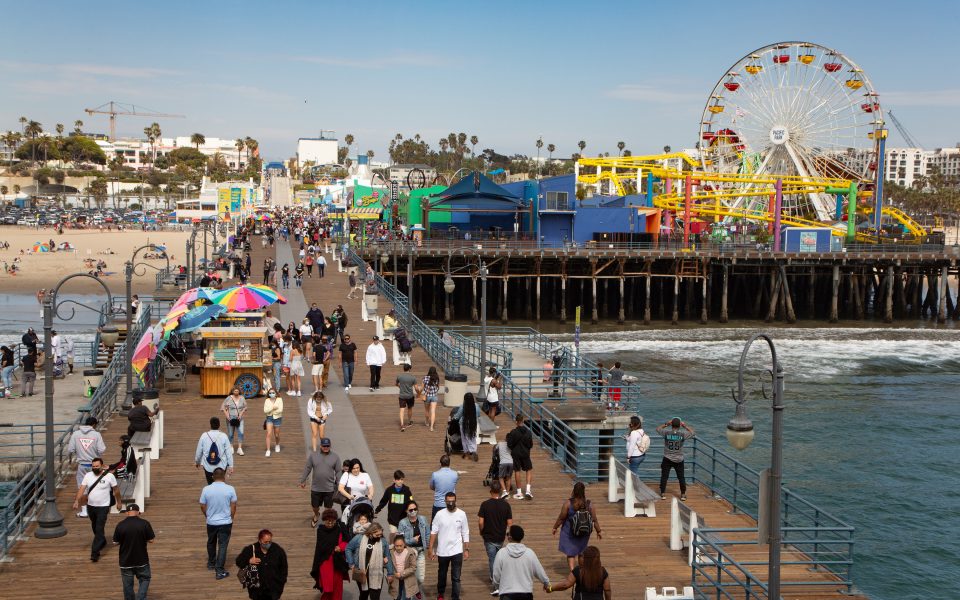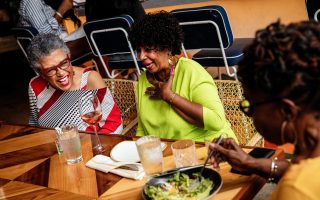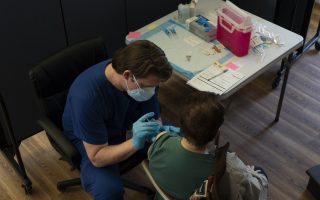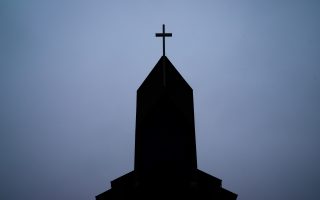The start of a comeback in five US cities

As Covid-19 vaccinations have picked up and more businesses reopen across the country, Easter weekend saw a resurgence of tourist activity in some cities, perhaps indicating a turning point for the struggling tourism industry.
Chip Rogers, the president and chief operating officer for the American Hotel & Lodging Association, the trade organization for the hospitality industry, said that before last weekend, recovery had been “very regionalized,” with places like Florida and Texas doing well and “cities that thrive on large meetings and conventions like a Chicago, Orlando, Las Vegas” struggling to recover.
“You’re seeing really good pickup over the weekend dates, which have now extended. Traditionally they’re Friday to Sunday, now it’s Thursday to Monday,” he said, referring to the increase in leisure travel. But the lack of business travel means weekday bookings continue to lag. Still, he added, there’s reason for “cautious optimism.”
But travelers, even those who are fully vaccinated, should practice caution while visiting some states, health experts warn. Case numbers are going up in some popular destinations, like Florida, which saw a spike as revelers flocked there during spring break. The Centers for Disease Control and Prevention still recommends that people continue to wear masks, social distance and frequently wash their hands, even though some local governments have relaxed or lifted these rules.
Here’s a look at what happened over the weekend in five major U.S. cities and what it might mean for the future of the tourism industry.
New York City
New York City came alive last weekend as many businesses and industries that had remained closed since the start of the pandemic reopened April 1 at reduced capacity, including sporting and concert venues, as well as some hotels and sightseeing cruises. These reopenings, along with warmer weather and the increasing rate of vaccination, appear to have been a boon to the tourism industry, said Chris Heywood, executive vice president of communications for NYC & Co., the city’s official tourism organization.
“It just seems like a surround sound of a lot of positive news coming out,” Heywood said.
Times Square, perhaps the best harbinger for tourist activity in the city, had it’s highest pedestrian count this year so far, around 150,000 per day, according to the Times Square Alliance, which tracks activity in the area. That’s up 394% from the same weekend last year but still far off from prepandemic numbers. During the same weekend in 2019, an average of approximately 364,000 people per day visited the area, said a spokesman for the alliance.
“We still have a ways to go until Broadway reopens, which will be a significant increase in tourism for the city and Times Square,” Tom Harris, the alliance’s acting president, said, “but these small steps are allowing more people to safely experience what Times Square has to offer after a long year.”
Miami
Warming weather and comparatively looser COVID-19 regulations have drawn many tourists to Miami and the surrounding area. As a result, said Greg Galy, who owns Mila Miami, a restaurant in Miami Beach, many have traveled from out of state for extended stays — particularly from places like Los Angeles, New York and Chicago — which he said “has enabled the business to pick up customers that we wouldn’t have.”
This influx proved problematic over spring break, when police officers in riot gear used pepper balls to enforce an emergency curfew and disperse revelers ignoring social distancing and mask regulations.
During the period of March 28 to April 3, Miami “saw its highest occupancy level since the start of the pandemic, with most hotels reporting upward of 75% occupancy levels,” said Suzie Sponder, a spokeswoman for the Greater Miami Convention & Visitors Bureau. That’s only a 6.6% drop from the same weekend in 2019.
Sponder added that the average room rate for the weekend was $282.29, up 25% from 2019. And Rogers, of the American Hotel & Lodging Association, said that revenue, which was still down across the board, was the best indicator of the industry’s recovery, noting that Miami’s strong numbers were the exception rather than the rule.
In the tourism industry, “you still have a lot of folks that are out of work,” he said, “because it’s those large, city center urban hotels that employ the most people, because they have those extensive food and beverage operations that are not working right now. That’s where most job loss is occurring.”
Los Angeles
In Los Angeles, hotel occupancy has mostly grown steadily week over week since the beginning of the year, according to the Los Angeles Tourism & Convention Board.
“Our weekends have been at 70+ percent occupancy for the past two weekends,” Jamie Simpson, vice president of global communications for the board, wrote in an email Monday. That number remained steady over Easter weekend, with an average occupancy of 70.4%. That’s the highest since last March, before the start of the pandemic.
Simpson said the board anticipated a 35% spike in visitation in 2021 over 2020 but did not expect to reach 2019 levels until 2024.
Still, as more businesses reopen, the board is starting to market to domestic visitors. Museums in the city have started reopening, as have theme parks and outdoor live events. (Disneyland, in nearby Anaheim, is scheduled to reopen at the end of April.)
“It’s been an incredibly tough year for the restaurant industry, but LA has seen a bubble of hot new restaurants open recently,” Simpson said, as well as several new hotels.
Las Vegas
In Las Vegas, there have been a slew of reopenings, including the restarting of pool parties across a number of hotels.
“If you’re in Vegas and try to go to a pool, it’s not easy,” said Derek Stevens, who owns and is the chief operating officer of the Circa Resort & Casino. “It’s like trying to book a dinner reservation on New Year’s Eve. It’s not something you do the day before.” Spots at the pools at his establishments, which include two other hotels, are booked a month in advance because of reduced capacity limits and social distancing, which he said showed that there was demand for leisure travel. Hotels and other venues in the city are limited to 50% capacity.
Although the weekend of Easter is, historically, the second slowest weekend in the city, this year was different because of March Madness, the annual NCAA basketball tournaments. “Everything was packed to the restricted capacity level,” he said.
“On Saturday, all of our venues were filled by 10 a.m. because of Final Four. I think that was the case throughout all of Las Vegas.”
Stevens said that since the Super Bowl, in February, there had been indications that the tourism industry in Vegas was recovering, adding that his three hotels had been sold out every weekend since. “I’ve never seen booking at the rate of what we’ve seen in the past three months or so. This is the strongest booking that I’ve ever experienced,” he said.
But there continues to be a dip during weekdays because of the lack of conferences or conventions. “What we’re seeing is enormous pent-up demand for leisure travel that, while it’s going to take place throughout the entire summer, does not necessarily mean that business travel will follow suit,” he said.
New Orleans
Although New Orleans did see a boost over spring break, Passover and Easter, it still has a long way to go “before a full recovery of our $10-billion hospitality industry,” said Kelly Schulz, senior vice president of communications at New Orleans & Co.
Hotel occupancy has been inconsistent, ranging from 20% to 49% between January and March, and in some cases up to 90% on key weekends in the French Quarter, Schulz said.
Last weekend, hotels were up to slightly over 68% occupancy, according to STR, a global hospitality data and analytics company.
“New Orleans has one of the lowest Covid-positivity rates in Louisiana and among the highest vaccination rates,” Schulz said. She hopes this, along with “the easing of restrictions, including the return of live music, is another sign that brighter days are ahead.”
People also appear to be planning future travel, with 60% of people who visited NewOrleans.com planning a trip in the next three months. Schulz notes that she is “optimistic about the fourth quarter of 2021 with a convention and festival schedule.”
Although leisure travel over the summer is expected to keep the industry afloat, Rogers said business travel would need to pick up in order to restore the industry to 2019 levels.
“While we’re optimistic, what we’re fearful of and concerned about is, what happens post-Labor Day when all of this leisure travel has passed?” he said. Business travel, he said, “is absolutely necessary if we’re going to survive.” [The New York Times]






